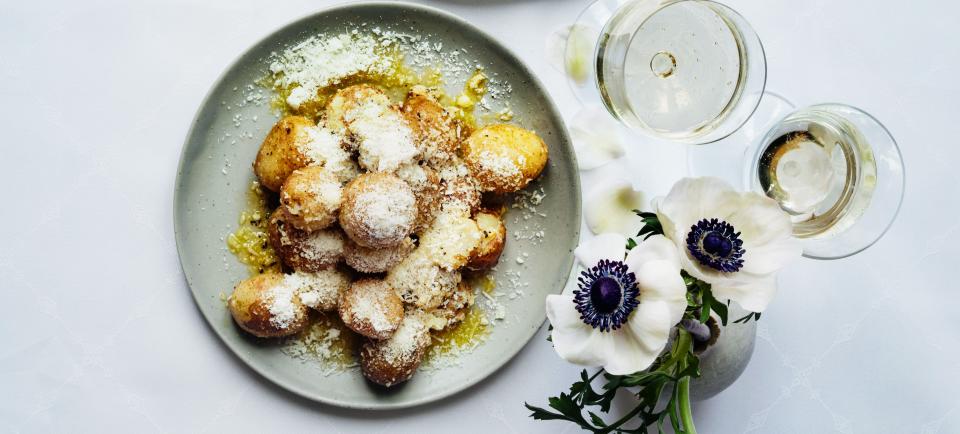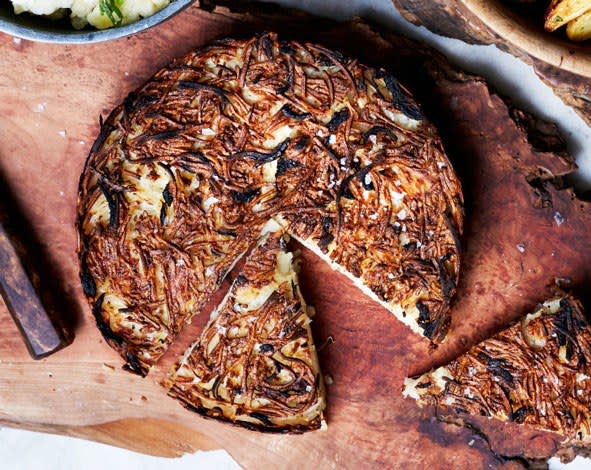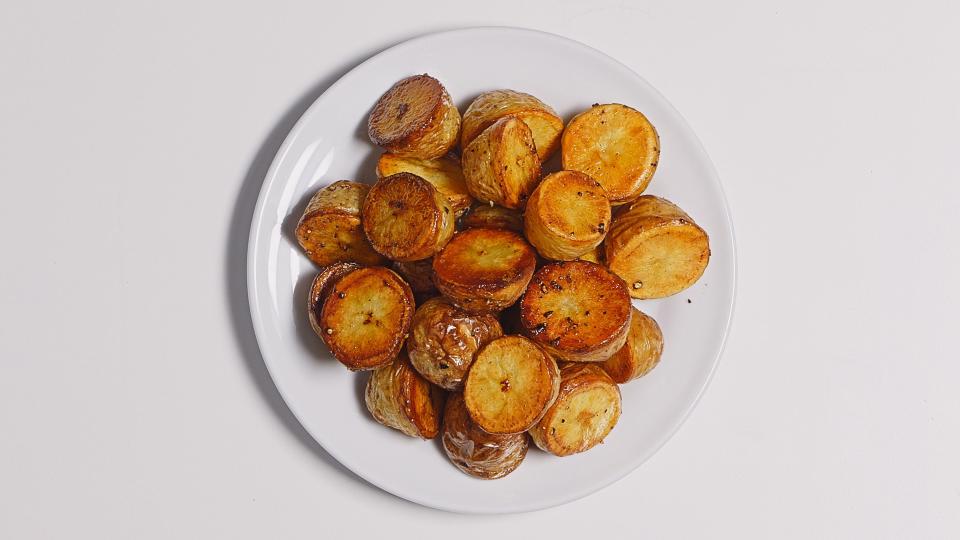WTF Is a "Waxy" Potato?
Here’s a thought: Would life would be (just a tad bit) easier if, at the grocery store, potatoes were divided up into the “waxy,” “floury,” and “in-between” categories?
If you’ve ever bought a couple of russets thinking you were going to make potato salad, or a pound of fingerlings thinking they’d make a really unique mashed potato situation… then you feel my pain. Waxy and floury potatoes are not interchangeable—your gloppy potato salad or gluey mash will have alerted you to that truth.
But what do these categories even mean, which type is best for what use, and what common potatoes fall in each group?! And is there a kind of potato that will almost surely work in any situation?
You have questions, and we have answers:
Waxy
New potatoes, Red Bliss, pee wees, fingerlings! These potatoes, which are often small (and apparently, fun-named?), have thin, smooth skin and creamy, almost shiny flesh. They’re also known for their particularly potato-forward flavor. Because waxy potatoes are relatively low in starch and high in moisture, their cells stay intact when they’re cooked, meaning that slices or cubes hold up when boiled or baked.

cacio-e-pepe-potatoes
This makes waxy varieties the best choice for dishes where you want the potatoes to maintain their shape: Think potato salad, gratin, smashed crispy potatoes, cacio e pepe potatoes, or a tray of salt-roasted spuds.
But beware: They won’t break down into a creamy spoonable mash, and they’re not great for that classic baked and butter-topped beauty.: The interior ofr a waxy potato is firm (even a bit squeaky) rather than fluffy or yielding.
Floury
Higher in starch and lower in moisture than waxy potatoes, the floury varieties, like matte-skinned russets and Idahos, fall apart when boiled (the starches harden and expand, causing the skin to split and the interior to crumble into meal).

salt-and-vinegar-rosti-591x470
This fragility makes floury potatoes ideal for adding dairy-free creaminess to puréed soups or providing the elusive airy, whipped texture to a mash (though not alone: we favor mashing them with a waxier variety for optimal flavor). And since starchiness often translates into crispiness, floury potatoes are good candidates for roasting and frying: Use them in French fries, latkes, hash browns, or rosti for a delightfully crispy shell and creamy insides.
In-betweenies
And finally, there are the “all-purpose” potatoes, which fall somewhere between the waxy and floury poles. If, by the number of times you’ve seen Yukon Golds in a BA recipe, you’ve guessed that these are our AP potatoes of choice, you are correct.

Semi-starchy and semi-waxy, they’re simultaneously more plush than waxy potatoes and less crumbly than floury ones (which makes sense, since YGs are a cross between a starchy North American white potato and a waxier South American yellow one). Because they hold their shape when boiled, grated, or fried and yield to mashing, they’re incredibly versatile: Roast them, smash them, boil them, shred them into latkes, or break them down into creamy oblivion. What can’t this potato do?!
In Molly Baz’s Slow-Roast Gochujang Chicken, baby Yukon Golds sizzle in the chicken fat that drips off the bird as it cooks: By the time the meat is fall-apart tender, the potatoes are buttery-soft. You can smash into the schmaltz without sacrificing their cute globular shape.
Now that you can tell a waxy potato apart from a floury one, you’re destined for never-starchy potato salads and deep, dark hashbrowns. But when in doubt, Yukon Gold.
Chicken and potatoes, a match made in heaven:
Slow-Roast Gochujang Chicken
Originally Appeared on Bon Appétit


